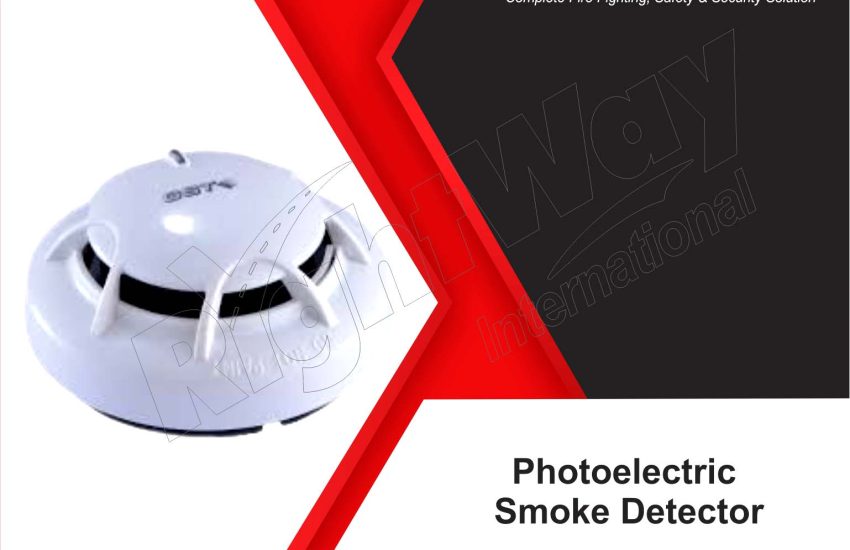What is a Photoelectric Smoke Detector: In the realm of fire safety, understanding the various types of smoke detectors is crucial for protecting your home or business. One of the most effective options available is the photoelectric smoke detector. In this article, we will explore what a photoelectric smoke detector is, how it works, its advantages and disadvantages, and best practices for installation.
What is a Photoelectric Smoke Detectors?
A photoelectric smoke detector is a type of smoke alarm that uses light detection technology to identify smoke particles in the air. Unlike ionization smoke detectors, which are better at detecting fast-flaming fires, photoelectric detectors excel in identifying smoldering fires, which produce larger smoke particles.
How Does a Photoelectric Work?
- Light Source: Inside the detector, there is a light source (usually an LED) and a light sensor positioned at an angle.
- Smoke Detection: When smoke enters the detection chamber, it scatters the light beam. This scattering directs light toward the sensor.
- Alarm Activation: Once the sensor detects the scattered light above a certain threshold, the alarm is triggered, alerting occupants to potential danger.
Advantages of Photoelectric detector:
- Effective at Detecting Smoldering Fires: Photoelectric smoke detectors are highly effective at identifying smoldering fires, which are common in items like upholstered furniture and bedding.
- Fewer False Alarms: These detectors are less likely to trigger false alarms from cooking smoke or steam, making them a practical choice for kitchens and living areas.
- Longer Lifespan: Photoelectric smoke detectors often have a longer lifespan compared to ionization models, typically lasting around 10 years.
Limitations of Photoelectric Smoke Detectors
While photoelectric smoke detectors have many advantages, they do come with some limitations:
- Slower Response to Fast-Flaming Fires: These detectors may not respond as quickly to fast-flaming fires, which produce smaller smoke particles.
- Potentially Higher Cost: Photoelectric smoke detectors can be slightly more expensive than their ionization counterparts, though the difference in price is often justified by their effectiveness.
Comparison with Other Smoke Detector Types
To choose the right smoke detector for your needs, it’s essential to understand how photoelectric smoke detectors compare to other types:
- Photoelectric Smoke Detectors: Best for detecting smoldering fires, less likely to give false alarms from cooking smoke.
- Ionization Smoke Detectors: More effective at detecting fast-flaming fires but can be prone to false alarms in kitchens.
Best Practices for Installing Photoelectric Smoke Detectors
To ensure optimal performance of your photoelectric smoke detectors, consider the following installation tips:
- Placement: Install detectors on every level of your home, especially in hallways and near sleeping areas, where they can provide early warning.
- Avoid Humid Areas: Do not place detectors in bathrooms or near cooking appliances, as humidity and steam can lead to false alarms.
- Regular Maintenance: Test your smoke detectors monthly, replace batteries at least once a year, and replace the entire unit every 10 years.
Conclusion
A photoelectric smoke detector is an essential component of a comprehensive fire safety strategy. Understanding how these detectors work, their benefits, and their limitations can help you make informed decisions about fire safety in your home or business. For maximum protection, consider using a combination of photoelectric and ionization smoke detectors.


